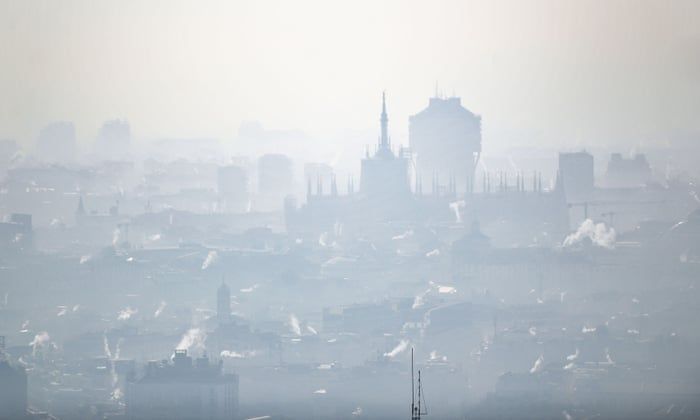Let’s seize this opportunity to ‘flatten the curve’ of air pollution

By Dr. Hind Al-Abadleh
While major news outlets track the number of illnesses — and deaths — caused by COVID-19, I have been looking for articles that report data on the concentration of pollutants used as indicators for air quality.
And in conversations with friends and colleagues I’m hearing comments about being able to breathe clean air and how being forced to slow our pace of life is Mother Nature’s way of saying “That’s it. Enough is enough. You’re all grounded.”
The daily rhythms of millions of people have been drastically changed as governments around the world have declared states of emergencies and lockdowns so that people go home and stay home. Granted, these measures are necessary and will be life-saving as they are based on advice from public health doctors and scientists. These measures will work for as long as people comply.

But will this heightened sense of awareness for our health continue once the coronavirus pandemic is under control, or will we go right back to polluting the air we breathe with nitrogen dioxide, ozone and fine particulate matter?
Surely, less cars on the street, less activity in factories and, in general, less carbon-intensive human activity have been reflected in the numbers of these pollutants since the COVID-19 lockdowns. Pollutant maps from NASA, the European Space Agency, and air quality monitoring stations showed drastic reduction in nitrogen dioxide levels over China, Italy, Paris, and San Francisco. Hence, when my colleague referred to breathing ‘clean’ air, he was talking about less pollutants and less particulate matter.
If the lockdowns happened during the hot and humid summer months, we would see a decrease — possibly an elimination — of smog episodes that also send vulnerable people to hospitals because they chose not to stay indoors to inhale filtered air.
According to the World Health Organization (WHO) and the Global Alliance on Health and Pollution, outdoor and indoor air pollution is the cause of over one third of deaths from stroke, lung cancer, and chronic respiratory disease, and one quarter of the deaths from ischemic heart disease. It is also responsible for the premature deaths of millions around the world and reduction in life expectancy. The largest susceptible groups are the young and elderly and those with chronic asthma and compromised immune system.
In general, human suffering and loss are devastating for any reason. Yet, it makes you wonder how humans in the 21st century rationalize their responses and action in the face of a pandemic such as COVID-19 compared to air pollution, which will get worse with climate change.
Is air pollution recognized as a public health issue in different countries? Yes.
Are statistics collected and published in reputable medical journals? Yes.
Does the WHO and the World Bank recognize air pollution as a ‘invisible killer’? Yes.
Does the WHO call upon countries to take action to improve air quality for the health of their citizens? Yes.
Now that we know the causes of air pollution and that it will get worse with business-as-usual lifestyles that caused climate change, do we have the expertise and tools that will help us ‘flatten the curve’ of air pollutants and even squash it? Yes.
Once we pass the COVID-19 pandemic, which would have given us the best ‘clean’ air possible in metropolitan centres around the world, let’s consciously and seriously decide to keep air quality and the health of the climate front and centre in our lives and political discussions.
Through a SMART action plan with specific, measurable, attainable, relevant and timely goals, we can improve the ‘health of the economy’ and the clean energy sector without compromising the quality of the air we breathe.
All is required is to make personal choices, vertical and horizonal co-operation and collaboration at all levels and maintaining the sense of interconnectedness locally and across borders that we acutely feel during these tough times.
Hind Al-Abadleh is a professor of chemistry at Wilfrid Laurier University and the 2019 Fulbright Canada Research Chair in Atmospheric Chemistry, Air Quality and Climate Change at the University of California Irvine. She can be reached via email at halabadleh@wlu.ca.
(Originally published in the The Waterloo Region Record)
